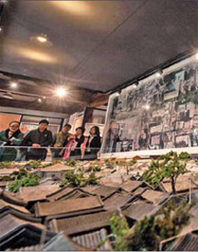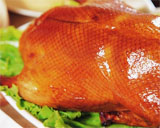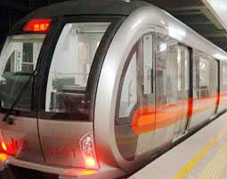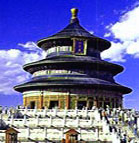The ancient Beijing revives
in the magic of the Hutongs |
 |
Beijing Hotels >>  FAMOUS HISTORICAL FIGURES INHABITED IN THE HUTONGS FAMOUS HISTORICAL FIGURES INHABITED IN THE HUTONGS
THE MOST FAMOUS
Shijia Hutong Museum
Dong Xi Jiao, the longest
Shichahai Hutongs
The Hutongs are narrow streets and alleys with characteristic buildings with courtyard, but they are also a way of life, a style. The most famous hutongs are located around the Forbidden City.
Currently in Beijing the Hutong still existent are less than 1000. But they are protected and can not be demolished under any circumstances. Some Hutongs have been transformed into bars, shops, galleries.
In Beijing, today they are only about 1000, placed under protection. Once they were many more, but the development of modern Beijing has made disappear hundreds of them. We are talking about Hutong. What are the Hutong? Many would say that they are narrow streets and alleys with characteristic buildings . But this term also means a lot more. Hutong is also a way of life , a style, an ancient soul that lives on in some of Beijing streets today. The most famous hutongs, the ones that today tourists can easily see, are located in the narrow streets centered around the Forbidden City. Their origin varies between dynasties Yuan, Ming and Qing dynasties, that is it can be between 1206 and 1908. The hutongs still represent the city as it was conceived by the ancient emperors. The imperial residence in the center (Forbidden City ) and all around a dense series of alleys and streets that were projected by the staff of the Empire.
Hutongs near the Forbidden City
To the east and west, very close to the imperial palaces, there were the luxury hutongs, where the important people lived, high officials, nobles and relatives of the emperor. The common people lived a little farther to the north and south, in hutong small and simple, with low walls and entrances of modest size. The classical structure of the Hutong is based on siheyuan, which houses at the ground floor (typical gray walls and roofs) on the four sides of a courtyard. The measure of the social level of the family was made on the basis of the magnitude of their Hutong. The high-level houses contain several courtyards, high walls, large doors and refined decorations on walls and support beams. In the common Hutong they lived simple artisans, merchants, perhaps even service providers to the royal palace and the houses of the nobles. The hutong, as well as being the home, were also passages that connected the various residences to one another.
The museum of Shijia Hutong
One of the most beautiful and best preserved Hutongs is the Shijia Hutong (Yuan Dynasty, 1271-1368), located just one kilometer away from the Forbidden City. Right here, at the courtyard No 24, was recently opened a beautiful museum on a hutong called, Shijia Hutong Museum. The museum provides general information about Shijia Hutong, history, photos, archives, including information on celebrities who once lived here and a plastic model that faithfully reproduces the shape of Shijia Hutong. They are very interesting also the documents, objects and explanations about the daily life of every day. In this museum you can see also a video documentary with the testimonies of the hutongs inhabitants.
The most famous Hutongs
The Hutong in Beijing are not only those that surround the Forbidden City. Among the remaining Hutong, the most interesting to visit are three, South Gong and Drum Lane (Nanluogu Xiang), Dong Xi Jiao Hutong and Shichahai Lake Hutongs, which are perhaps the most beautiful and best preserved.
Nanluoguxiang Hutong
Nanluoguxiang is a hutong with many visitors, located in Dongcheng district. It is about 800m long, from East Street Guluo to Dianmen East Street. Nanluoguxiang was built during the dynasty Yang (1271-1368), its present name was given during the Qing dynasty, around the year 1750. In recent years the area has enjoyed growing success of tourism and there were open bars, shops and galleries. Getting to this Hutong is very easy, in fact there is a Subway stop with the name Nanluoguxiang.
Dong Xi Jiao, the longest Hutong
Dong Xi Jiao Hutong is located in the old embassy area. It is 3,35 kilometers long and is the longest Hutong in Beijing and is considered among the most beautiful. This long city street runs parallel to Chang An Road. It was once a rich road on which the rice was sold, and was also considered the financial center of the city, because here there were many banks and shops.
Shichahai Hutongs, the most picturesque
As the most picturesque and fascinating Hutongs in the eyes of the tourist, the Shichahai hutongs are twisted around a large lake north of Beihai Park. The place is really impressive. Crossing the picturesque bridge Yinding , you will discover the poetry of the ancient buildings that are reflected on the water. You will keep along the banks of the charm of the weeping willows, moving sinuously with the breeze off the lake. The Shichahai Hutongs are also the richest in history, historical figures have lived here, nobles, generals of the emperor, eunuchs and important people of imperial blood. The most appropriate means of transport to visit the Shichahai Hutongs are the rickshaw from the red roof. The ideal is to be accompanied by a guide. The guide will put you in direct contact with the families who live here, you can make them your questions, you can see them live in the life of every day, and you can eat with the family, tasting typical dishes of Beijing.
2014-02-12 The ancient Beijing revives
in the magic of the Hutongs | GOOD FOOD & RESTAURANTS,
WHERE TO GO EAT IN BEIJING | THE TOURIST GUIDE
TO MOVE IN BEIJING | More than 100 attractions
are the 'treasure' of Beijing | | |
|
Main Cities in China Travel and China Hotels







 Beijing Beijing  Canton Canton
 Shanghai Shanghai  Hong
Kong Hong
Kong  Qingdao Qingdao  Hangzhou Hangzhou |
Other Major Cities:
Changchun,
Chengdu,
Chongqing,
Dalian,
Dongguan,
Dunhuang,
Foshan,
Guangzhou,
Guilin,
Haikou,
Harbin,
Hainan,
Hangzhou,
Kunming,
Lhasa,
Macau,
Nanjing,
Qingdao,
Sanya,
Shenyang,
Suzhou
Shanghai,
Shenzhen,
Tianjin,
Weihai,
Wenzhou,
Xiamen,
Xi'an,
Yiwu
|
Major China Hotels:
Beijing Hotels,
Chengdu Hotels,
Chongqing Hotels,
Dalian Hotels,
Foshan Hotels,
GuangZhou Hotels,
Guilin Hotels,
Hangzhou Hotels,
Harbin Hotels,
HongKong Hotels,
Kunming Hotels,
Macau Hotels,
Nanjing Hotels,
Qingdao Hotels,
Sanya Hotels,
Shanghai Hotels,
Shenyang Hotels,
Suzhou Hotels,
Tianjin Hotels,
Urumqi Hotels,
Wenzhou Hotels,
Xiamen Hotels,
Xian Hotels |
|  |
|
 FAMOUS HISTORICAL FIGURES INHABITED IN THE HUTONGS
FAMOUS HISTORICAL FIGURES INHABITED IN THE HUTONGS








